Surgery Transformations and Spectral Analysis of Differential Operators on Metric Graph
Abstract:
Spectral geometry investigates the relationship between the geometric structure of a mathematical object and the spectra (eigenvalues) of the differential operators acting upon it. The concept of representing interactions within systems as networks has been well-established and extensively studied. In graph theory, a common approach is to derive the characteristics and structure of a graph from its spectrum. In traditional discrete network models, the focus is on connectivity, with little regard for the geometric aspects of connections. Each edge essentially represents a connection between two nodes, and edge length is typically ignored. However, this simplification can limit the accuracy of modeling real-world systems. To address this limitation, quantum graphs, which are differential operators on metric graphs with well-defined edge lengths, offer a more detailed and precise framework for modeling complex systems. These graphs use differential operators to describe continuous dynamics. Analyzing operators on metric graphs can be a challenging task, both theoretically and numerically. To overcome these challenges, we aim to estimate operator properties, such as eigenvalues, expressed in terms of the graph's geometric and topological parameters. The PhD research focuses on two main aspects: the surgery transformation technique and spectral estimates of differential operators on metric graphs—also known as quantum graphs. The surgery transformation is a powerful tool used to modify the structure of a metric graph while predicting its impact on the spectrum. By employing this technique, the thesis investigates the effects of topological changes on the spectrum of the operators. Furthermore, we establish bounds on the spectrum of differential operators on the metric graph. The second step is to establish bounds on the spectrum of differential operators on the metric graph. Extensive computational experiments are conducted to validate the theoretical findings and provide concrete examples of the surgery transformation process and spectral estimates. The results obtained from these experiments further describe the behaviour of the differential operators on metric graphs and their spectral properties. The thesis consists of three papers, each dealing with various techniques and methodologies to derive upper and lower bounds for the eigenvalues. Paper I focuses on studying surgery principles for a fourth-order differential operator on metric graphs, deriving interlacing inequalities for vertex gluing, and presenting lower and upper estimates on the eigenvalues. Paper II explores the influence of surgery principles on the spectrum of the graph Laplacian equipped with delta-prime vertex conditions and provides applications of the surgery principles. Paper III presents a formula for generating the number of eigenvalues of the Dirac operator in a gap. Overall, our PhD research offers a comprehensive study of the surgery transformation technique and spectral estimates of differential operators.
List of publications:
Surgery Transformations and Spectral Estimates of delta-Beam Operators, Aftab Ali, Muhammad Usman, Mathematical Physics, Analysis and Geometry.
Surgery Transformations and Eigenvalues Estimates for Quantum Graph with delta-prime Vertex Interactions, Aftab Ali, Muhammad Usman. (Preprint)
On the Number of Eigenvalues of Dirac Operator in a Gap, Aftab Ali, Muhammad Usman. (preprint)

